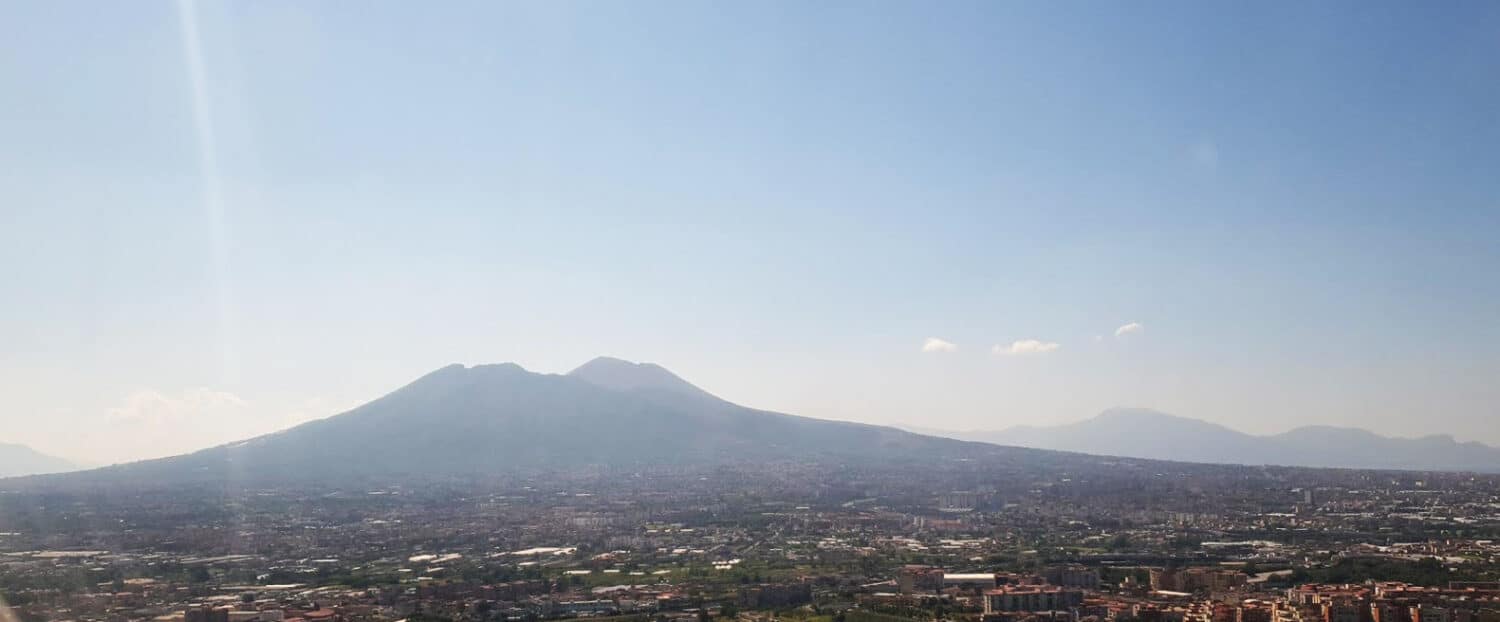Mount Vesuvius (Vesuvio) is one of several volcanoes that form the Campanian volcanic arc and is the only active volcano in mainland Europe.
During the eruption in AD 79 that led to destruction of Pompeii, Herculaneum and other cities, Vesuvius ejected its cloud of stones, ash and fumes to a height of 33 km. It spewed its pyroclastic flow at the rate of 1.5 million tons per second, ultimately releasing an overall thermal energy exceeding by hundred-thousand-times the energy released by the Hiroshima bombing. The Roman towns and villas that were buried during the eruption became today one of the most famous archaeological areas in the world, a Unesco World Heritage site named “Archaeological Areas of Pompei, Herculaneum and Torre Annunziata”,

Today Vesuvius is visited every day by hundreds of tourists, that park their car at the end of the vehicle-accessible street, at about 30 min walk from the crater, and start there a quite extraordinary guided tour to the top of the mountain and along the crater. In order to reach the parking under the top of the Vesuvius from the farmhouse Agriturismo La Morella, you need to take the highway to Ercolano/Torre del Greco and then follow this map. An interesting choice for a one-day trip from our farmhouse is to join in a single day the visit to Mount Vesuvius and to Herculaneum. Warning: don’t follow the road across “Boscotrecase” suggested by Google maps and some navigator, on the southern side of mountain, which is actually closed. We selected for our guests this website to get further information before visiting Pompei.



